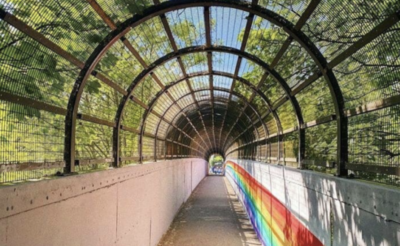In an earlier post, I discussed the distinction between mutual aid and charity. Among other things, I pointed to this distinction as a false dichotomy. In truth, mutual aid and charity operate more as end points along a spectrum. Non-profits even sometimes engage in mutual aid, while mutual aid orgs sometimes do charity. I want to expand on all that in this post by bringing in the notion of prefigurative politics.
But, more than anything, I want to bring in the issue of how people set up a mutual aid org from the beginning. So, as a starting question, why do mutual aid orgs form? What do they want to accomplish? What do they look like?
Mutual Aid and Class
If you ask people in a mutual aid org why the group exists, most will tell you they want to help people survive. They’ll say this either directly or in a roundabout manner. But say it they will. In other words, the orgs focus on the social reproduction of the lower classes.
Many – though far from all – mutual aid orgs operate with an underlying leftist class politics. With the class politics added, this amounts to helping working-class people survive and thrive so that they can unite together to advance their shared class interests.
But these class politics tend to be ambiguous, unclear, and/or ill-formed. Why? I suspect part of the answer comes from how people set up mutual aid orgs in the first place. People tend to form these orgs in one of two basic ways: as an independent org practicing prefigurative politics without an underlying organizing model, or as a branch or working group of a larger leftist org that does have an organizing model of some kind.
I think we have good reasons to prefer the latter to the former.
Prefigurative Politics vs. Embedded Mutual Aid
So, that brings us to prefigurative politics. What is it? In short, it’s when an org sets itself up as a small model of the society it wants to see. A mutual aid org that wants to see participatory, democratic structures in society sets up…participatory, democratic structures that distribute aid. They want an org that’s independent from NGOs, non-profits, and so on. So, they set up an org independent from NGOs and non-profits.
Consider Food Not Bombs as a prime example of all this. It’s participatory, democratic, and highly voluntary. It maintains total independence from any non-profit or NGO structure. It distributes aid without requiring any paperwork. On some definitions (again, see my previous post on mutual aid), it does mutual aid work, though on other definitions, it primarily does charity. But, regardless, it does prefigurative politics.
Prefigurative politics aren’t necessarily either a good or a bad thing. But it’s worth pointing to some sharp limits and down sides. As a broad point, it encourages counter-cultural groups and thinking, which sharply limits the number of members these groups ever manage to attract. Again, Food Not Bombs serves as an excellent example, with its aesthetic and its strict adherence to veganism. These features keep it very small.
In terms of the groups themselves, the politics are often assumed or unstated. And so, these groups tend to forgo any deep leftist analysis of politics and engage instead in unchecked moralism. Second, they rarely, if ever, grow beyond their core base of activists. Non-profits, by contrast, grow larger and serve more people. And third, the lack of a guiding ideology or organizing model means they rarely do much beyond their immediate social reproduction work. Forages into politics or power tend to be brief and ineffective.
Embedded Mutual Aid Orgs
I prefer the second way to form a mutual aid org. Many of the activities the orgs do are great. They can bring people together to share time and skills. They can help the working class survive and thrive. However, on their own, they rarely organize or build power. And so, why not form within an org that can build power?
The basic idea here is to form as a branch or a working group of an existing leftist org. In lots of places in 2022, that likely means the DSA. It could, however, mean a radical racial justice or queer liberation group. Among other potential examples.
Why does this work much better? In short, an org like the DSA can provide exactly what’s missing from the groups that operate on their own. It provides a place to organize, build members, and build power. And the mutual aid branch of it could still do the things it wanted to do in the first place.
In practice, this might look a lot like the community survival programs of the Black Panther Party. It would bring people together to share skills, serve the community, and also build new members for the broader org. In modern terms, it might look like a DSA chapter holding a potluck or skill share workshop where people also have an opportunity to join the DSA.
It would allow for a longer-term purpose beyond just aid.
